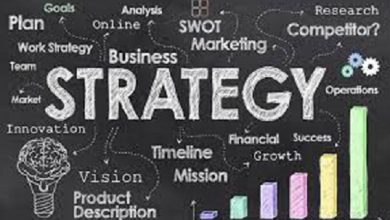What is Agile leadership/principles agile leadership/characteristics
Traditional leadership practices are outdated for today’s work environment, making agile leadership the best alternative for companies.
Due to the ineffectiveness of the old management model, more and more supervisors are looking for new ways to lead teams in order to keep them motivated and engaged.
Through the agile methodology, it is possible to have an innovative approach, engaging teams, revitalizing sectors and completely changing a company’s processes!
Therefore, today, we are going to find out all about agile leadership and this new generation of managers and business leaders, their basic concepts and how it is possible to apply them in the daily lives of modern professionals!
What is agile leadership?
To better understand agile leadership, it is necessary to first understand the origins of this term.
The agile work style appeared for the first time in the field of software development, still in 2001, gaining space among the most innovative companies.
It was used to describe a team approach characterized by constant experimentation, problem solving and gradual delivery of results.
Since its inception, agile leadership has become one of the most popular management styles among companies because of its efficiency and simplicity.
This type of leadership is currently defined as applying the principles of agility to the management style of employees, creating an effective team environment and shaping a diligent organization.
What are the principles of agile leadership?
It all started in 2001, with the launch of the Agile Manifesto, in which 12 fundamental principles of the management modality were outlined.
Changes in the job market required a new way of leading and motivating teams, generating more responsive, adaptable and flexible companies.
Because of this, some creators in the area of software development decided to create agile leadership and its 12 “commandments”.
1 – Satisfy consumers through early and continuous deliveries: agile leadership has as its principle the satisfaction of consumers through rapid and continuous deliveries, increasing the chances of meeting customer demands and increasing the company’s ROI;
2 – Accept changes in requirements even at the end of the project: unlike traditional management models, agile leadership accepts change requests even in the final stages of a project, embracing uncertainty and using innovation to advantage;
3 – Deliver value frequently: for agile leadership, it is more advantageous to deliver projects gradually than to increase the waiting time and the size of the launch processes of each product;
4 – Prevent information conglomerates during projects: according to agile leadership, a team must be multidisciplinary, putting an end to information conglomerates and cliques in the work environment;
5 – Build projects around motivated individuals: by decreasing the amount of team supervision and increasing team autonomy, processes evolved faster and with greater creativity;
6 – The most effective method of communication is face-to-face: despite having been highly effective in the early years of agile leadership, today, face-to-face communication is not necessarily the most recommended, especially for global companies;
7 – A functional product is the main measure of progress: regardless of the time dedicated to the project or the complexity of the processes, the main measure of progress of a product is its functionality;
8 – Maintain a sustainable work pace: agile leadership promotes a sustainable work pace, optimizing project execution and preventing employee burnout ;
9 – Continuous Excellence Increases Agility: Continuous attention to technical excellence and good design increases agility, allowing teams to create not only functional software, but also a stable, high-quality product;
10 – Simplicity is essential: consumers pay for solutions they need, not for the amount of effort and complexity of team work, so it is irrelevant to complicate something that can be done in a simple way;
11 – Teams that self-organize generate more value: the best architectures, requirements and designs emerge from self-organized teams, without the constant need for supervision and micromanagement;
12 – Constantly reflect and readjust methods of increasing team effectiveness: At regular intervals, teams must learn how to become more effective, reflecting on their methods and readjusting their concepts.
5 main characteristics
Faced with a dynamic and competitive market, the agile leadership model serves as a support for managers who need to plan and suggest quick and innovative solutions.
This way of leading is becoming more and more common within companies due to the results presented by the professionals who apply the model. But for that, leaders need to develop interpersonal skills in search of agility and good results. Find out what these characteristics are below:
1 – Flexibility
In order to make decisions and carry out fast and assertive actions, according to the varied demands, the professional needs flexibility. Therefore, you must develop resilience and creativity to remain flexible. If the mind is open to changes, it will certainly be easier to manage the sector and delegate tasks.
2 – Transparency
Giving feedback to the team and acting with transparency in relation to the company’s work and expectations are part of the agile leader’s routine. This direct and periodic communication creates a bond of trust between the team and the manager. Thus, facilitating day-to-day working relationships. Knowing this, remain open to conversations and integrate employees with the company whenever possible.
3 – Entrepreneurial spirit
Professionals with a spirit of ownership wear the company’s shirt, are hardworking, proactive and are in a constant search for improvement. So, the leader with an entrepreneurial spirit can motivate his team to also imagine and act in a bold and innovative way. Aaah! When inspiring and enabling this openness to the team, don’t forget to also give credit to those who deserve it in victory situations, whether small or large.
4 – Focus on customer needs
“Customer collaboration is more important than contract negotiation” is one of the principles of the agile manifesto. That way, focus on customer satisfaction and walk the team towards the tasks and goals that really matter. Together, deliver value to customers in rapid cycles.
In this context, it is important to maintain a posture of empathy and to know how to look at the customer first, but also to be able to put yourself in the shoes of employees, in order to delegate and develop the team, according to strengths and weaknesses.
5 – Develop the team
In addition to evaluating the individual development and performance of your team members, go further and develop collective intelligence. To do this, make it possible for all team members to assess the team’s strengths and weaknesses.




